Winter in the eastern suburbs
In Melbourne's winter the soil can be wet and cold. Seeds sown now run the risk of rotting before they
germinate, so waiting until July before planting peas and broad beans is a good idea. Soak pea seeds
overnight then germinate indoors between two sheets of damp paper towel. Alternately, plant 4-5 pea
seeds in bottomless pots and grow them under cover. Learn more about this here.
space than bush peas.
Asian greens are better grown in the cooler months as they won't bolt to seed.
Garlic can be planted out in June, and asparagus and rhubarb crowns any time in winter.
In late July, tomato seeds can be germinated in seed trays indoors on a sunny window ledge or in a
green house. The seeds need warm soil to germinate successfully.
Sow in June: Asian greens such as bok choy and tatsoi, cabbage, lettuces, mustards, rocket,
coriander, parsley.
Sow in July: Asian greens, broad beans, broccoli, cabbage, lettuces, mustards, sugar and snap peas,
spinach, turnips, coriander, rocket
Winter is the time for important garden maintenance jobs. Nothing like a bit of brisk gardening to warm
you up! Growing some colourful and scented winter flowering plants will give reward for your efforts.
(Scroll down for more on jobs and winter flowers.)
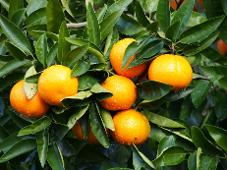
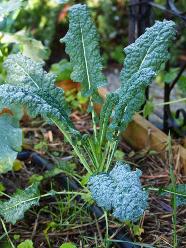
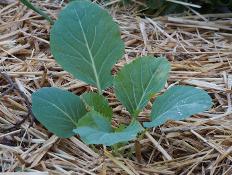
Ready to harvest this season:
Beetroot, parsnips and summer-planted broccoli are ready to harvest, and leafy greens like silver beet,
lettuces, mustards and kale are at their peak.
Tuscan black kale (photo above, centre) produces leaves over many months and can be used in
stir fries,
soups, quiches and casseroles. It can be shredded and
eaten raw in coleslaw along with the usual
cabbage.
Parsley will be growing prolifically, and coriander, planted every few weeks, should give a steady supply.
Mint can sulk in the cold, but a well established patch will keep going.
Perennial varieties to harvest in winter include: Jerusalem artichokes, chokos, perennial chillies and
potatoes.
Dried beans, remnants of the summer crop, can be used in soups and casseroles after the best have
been put aside for next season's crop.
Citrus fruits are ready to go: mandarins first, tangelos in a few weeks, oranges a little later.
Lemons, limes, kiwi fruit, winter growing rhubarb and delicious persimmons are ripe now.
Does your winter garden look dreary?
It can sometimes seem that not much is flowering in winter, but look out for correas, grevilleas,
calendulas, succulents, salvias and rosemary. Bush marigolds are still flowering too. These all provide
food for bees over the cooler months. Luculias, daphne and wintersweet provide wonderful winter
perfume.
Coloured and textured foliage also add brightness and interest. Red Hot Pokers are not only striking, but
bring Little Wattlebirds, Noisy Mynahs and other nectar loving birds to entertain you.
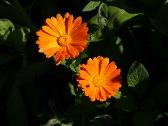
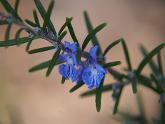
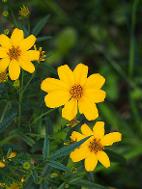
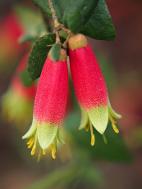
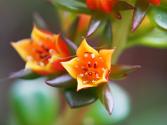
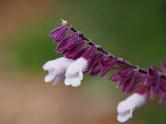
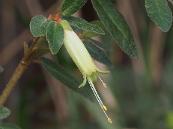
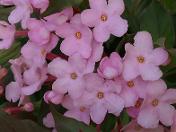
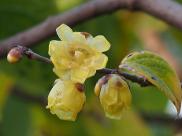
More winter brightness:
Nasturtium 'Alaska' with deep red chard.
Reds and pinks - this grows happily in a pot in a sheltered spot.
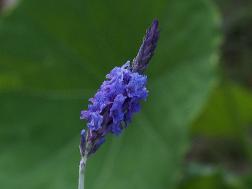
Lavender - a bright splash of purple.
Winter jobs
Fruit trees:
- To reduce the risk of fungal disease, rake up fallen leaves. Compost these or give to the chooks.
- Spray peach and nectarine trees with a copper spray to prevent curly leaf. Do this in June, and
- Prune any galls from the citrus trees. This is important to finish before August so the tiny gall wasps
- Pruning of deciduous fruit trees used to be considered a winter job. Now it is recommended that this
organisms infecting the trees, and helps to keep them at a manageable size. However, if you must,
you can prune. Disinfect secateurs with metho in a spray bottle, and choose a dry day.
Berries:
- Cut out canes that fruited last season and also remove any thin, spindly ones.
- Tie up long canes to keep fruit off the ground and at a good picking height.
- Spray with 'Eco oil' if stems have spots of whitish scale, and with a copper spray if leaves have black
- Pep up the soil with compost and/or well rotted manure.
Preparation for next season:
- Prepare seed boxes and pots for early sowings of tomatoes etc.
- Weed and mulch vegie beds